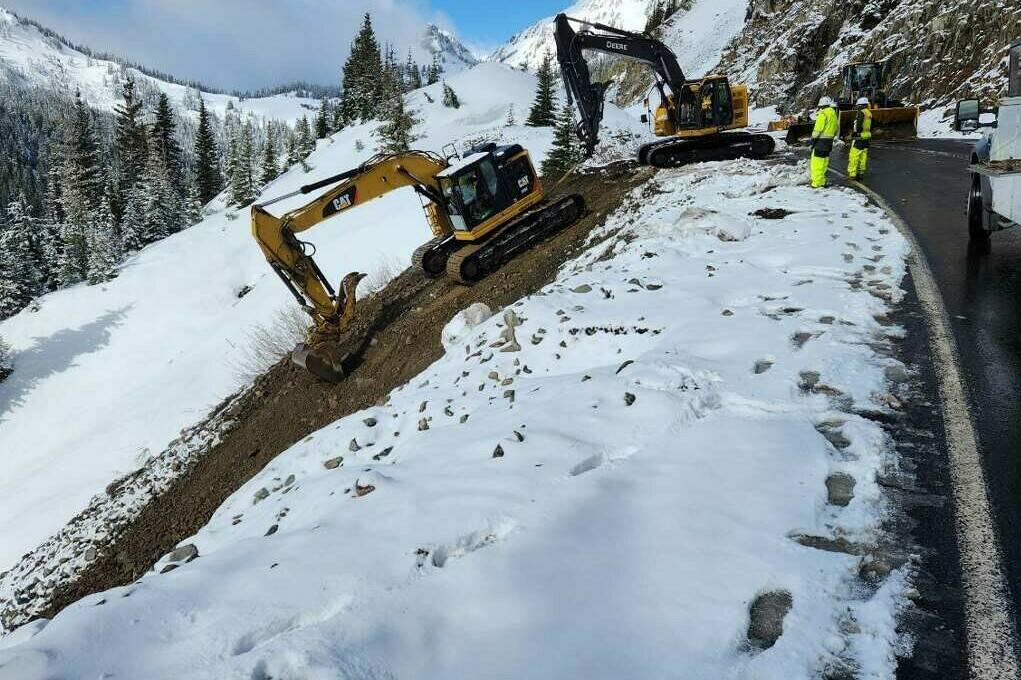Editor’s note: The following are edited press releases from Mount Rainier National Park.
Mount Rainier’s Chinook and Cayuse Passes, as well as Stevens Canyon Road, are now open.
The National Park Service opened state Route 123/Cayuse Pass on May 24, and SR 410/Chinook Pass on May 31.
This means that the Tipsoo Lake area is now available to visit via Chinook Pass, though you should expect snow.
Travel times may be affected on 410 as well, since construction crews are still doing some minor work on a 10-mile section of the highway.
It should be noted Sunrise Road and Mowich Lake Road are still closed for the season.
Many know that it’s the snow that causes the passes to close, but you may not know how much.
According to the National Park Service, Paradise gets an average of 643 inches, or just about 53.5 feet, of snow every year.
STEVENS PASS
One of Mount Rainier National Park’s most scenic roads has reopened after an extensive $43-million, two-year rehabilitation project funded by the Great American Outdoors Act Legacy Restoration Fund. The project repaired and restored nine miles of the iconic Stevens Canyon Road, which travels through the heart of the park and offers visitors breathtaking views of the rugged alpine landscape.
As the only road in the park connecting the popular Paradise and Sunrise areas, Stevens Canyon Road is traveled by many of the park’s 1.6 million annual visitors. The corridor also provides access to additional scenic attractions, recreational opportunities, and gateway communities along the park’s eastern border.
Decades of harsh winters, avalanches, rock fall and heavy traffic had impacted the road infrastructure, drainage systems, retaining walls and the road surface itself, resulting often in week-day closures. The project’s completion enables continued visitor enjoyment of the park’s natural, cultural, and inspirational features and reinforces infrastructure integrity through the repair of critical water drainage features that support proper runoff and minimize erosion.
Great American Outdoors Act (GAOA) funding enabled the National Park Service to make this transformational investment that included repairing and repointing historic Civilian Conservation Corps (CCC)-era stone masonry guard walls, retaining walls, culvert headwalls, tunnel portals, stone curbs, bridge, and viaduct parapet walls that contribute to the park’s National Historic Landmark District status.
“We are thrilled to reopen this spectacular route linking the west and east sides of the park in time for the busy summer season,” said Superintendent Greg Dudgeon. “As a result of all this work, visitors will have a smooth, scenic ride through the park and easier access to recreational opportunities.”
Stevens Canyon Road is buried under snow from approximately October through May every year, which limited construction work to the short, snow-free summer season. The roadway reopened to the public on May 24, 2024.
GAOA is part of a concerted effort to address the extensive deferred maintenance and repair backlog in national parks. Supported by revenue from energy development, GAOA’s Legacy Restoration Fund provides up to $1.3 billion per year for five years to make significant enhancements in national parks to ensure their preservation and provide opportunities for recreation, education, and enjoyment for current and future visitors.
For more information on Mount Rainier National Park, please visit the park’s website.


